Like brain cells, Noggin volunteers love reaching out, and synapsing with people and organizations in our vibrant Northwest community.
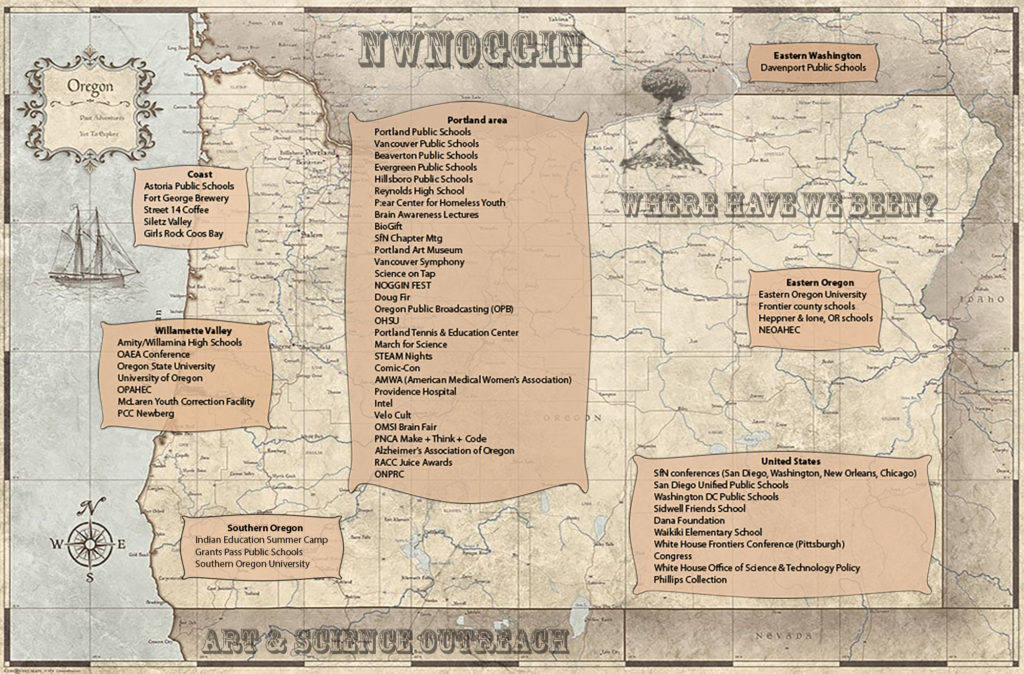
LEARN MORE: NW Noggin Collaborators
Excitatory Connections
At Portland State University, OHSU graduate students are integrated into advanced undergraduate neuroscience courses, while our accomplished PSU Neuroscience Club members not only present at regional and national conferences, but also volunteer in research labs on campus, at the Oregon National Primate Research Center and up on Pill Hill. Because of innovative programs like NIH BUILD EXITO, students who aren’t currently over-represented in science connect with research and career mentors, and benefit from access and experience to cutting edge scientific work…
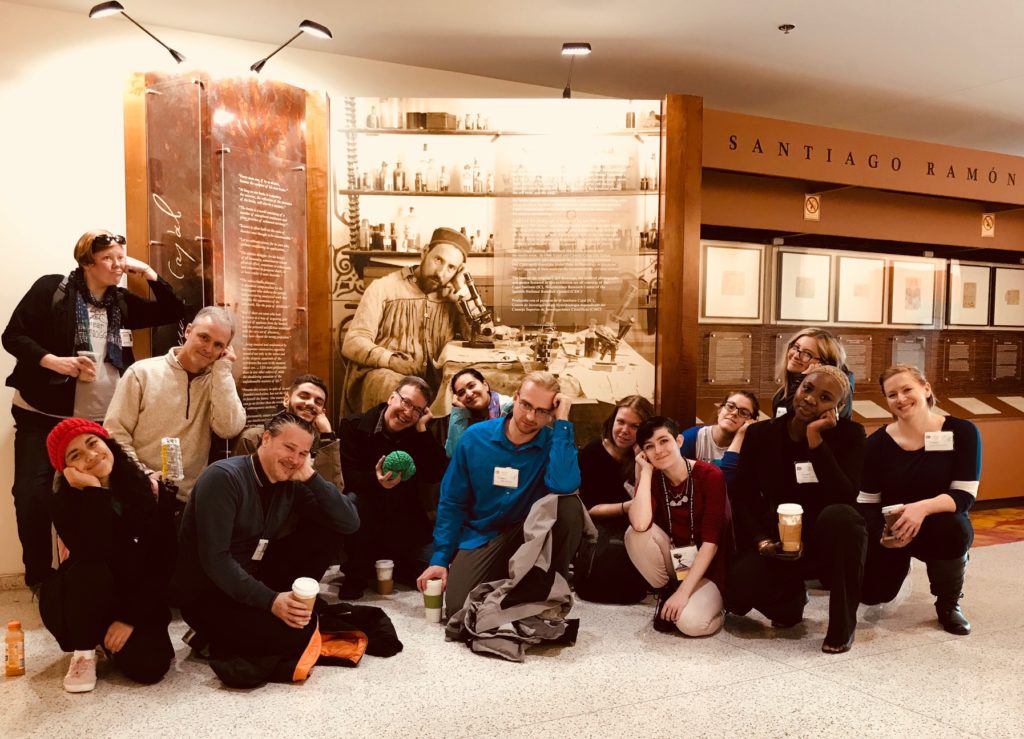
LEARN MORE: Addressing TBI through research, outreach & art
LEARN MORE: Building Connections through Mentoring
And with our extensive, multi-disciplinary, multi-institutional outreach – so many volunteer visits since 2012! – we’ve held brains, talked neuroscience, run free workshops, marched for science, listened, learned, answered questions, inspired interest and made art…
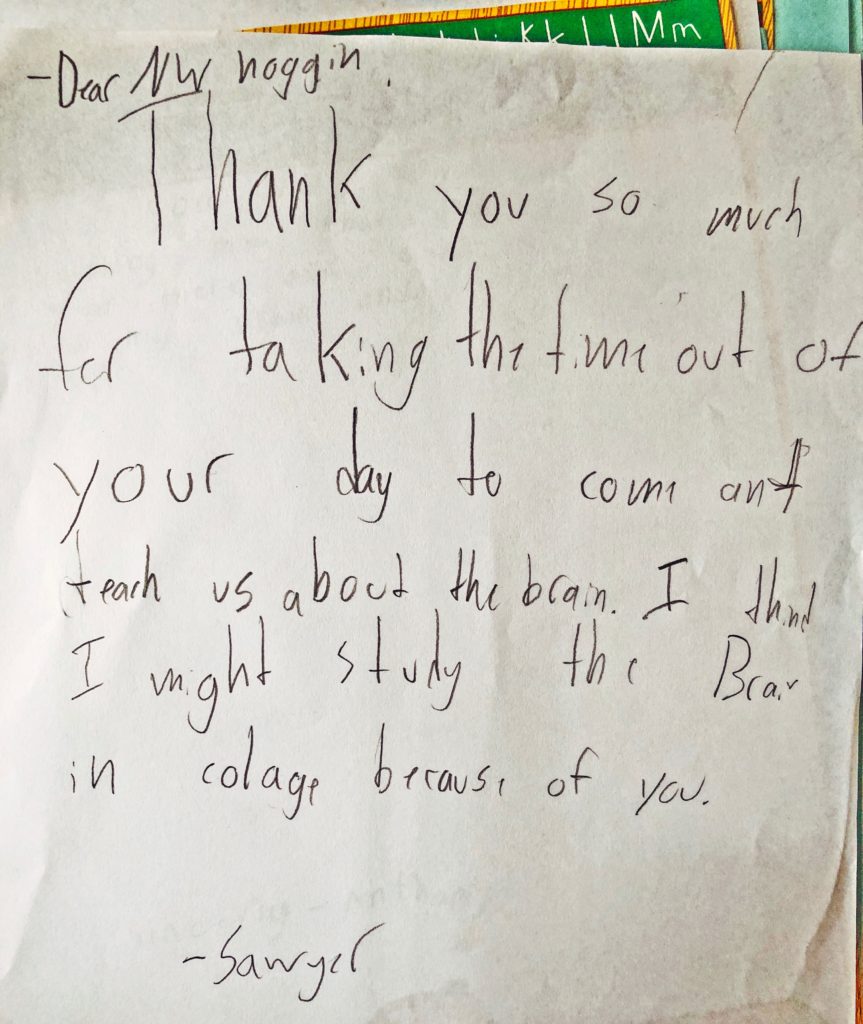
…with over 30,000 K-12 kids!
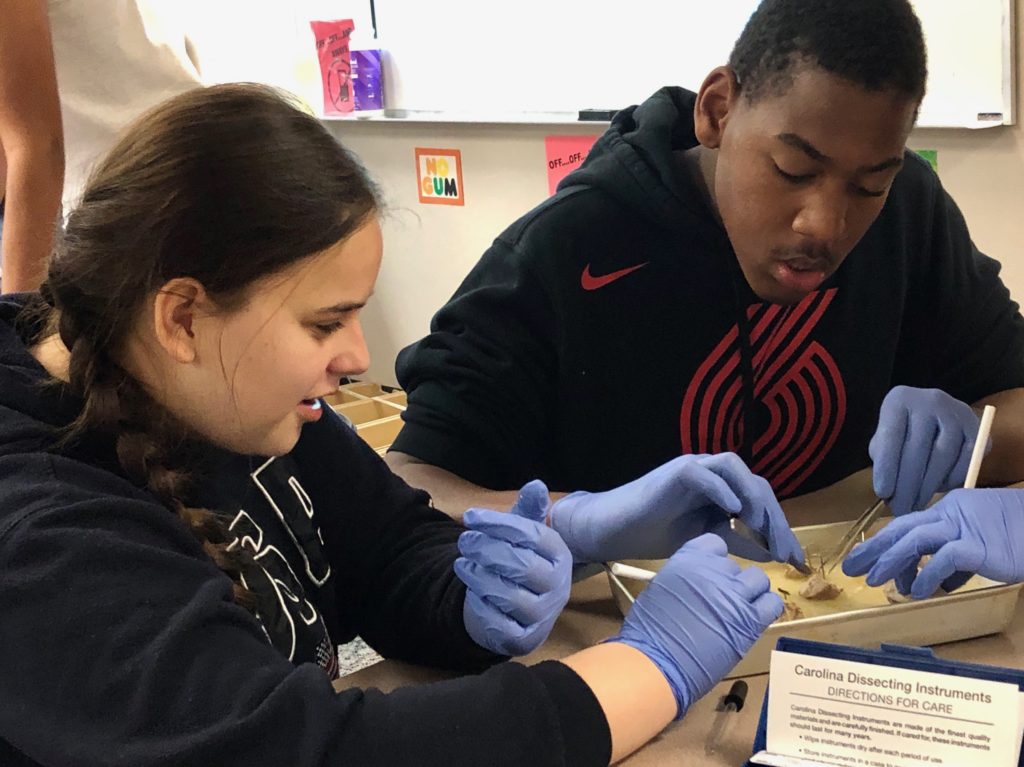
So we were thrilled to hear from Danielle Osborne, Staff Scientist at the Legacy Research Institute, about “opening up our neuroscience laboratories to undergraduates looking for research experience…” New connections are always welcome, and this was an extraordinary opportunity to discover more state of the art investigations underway not far from PSU…
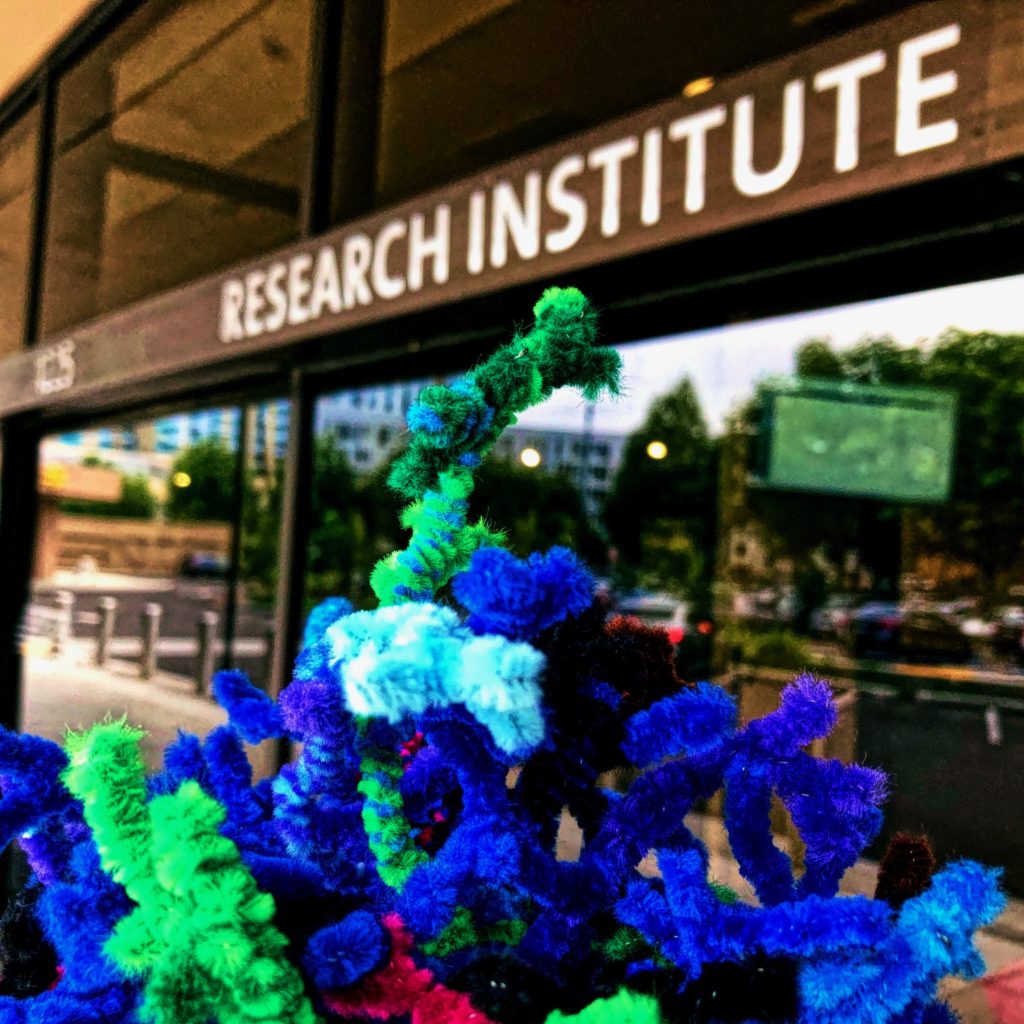
We gathered an enthusiastic cadre of undergraduate brain enthusiasts, most with substantial coursework, laboratory and outreach experience, to meet with Danielle and other professionals at LRI. “LRI fosters a culture of innovation and creative collaboration between researchers, clinicians, and other scientists both within Legacy Health and beyond.”
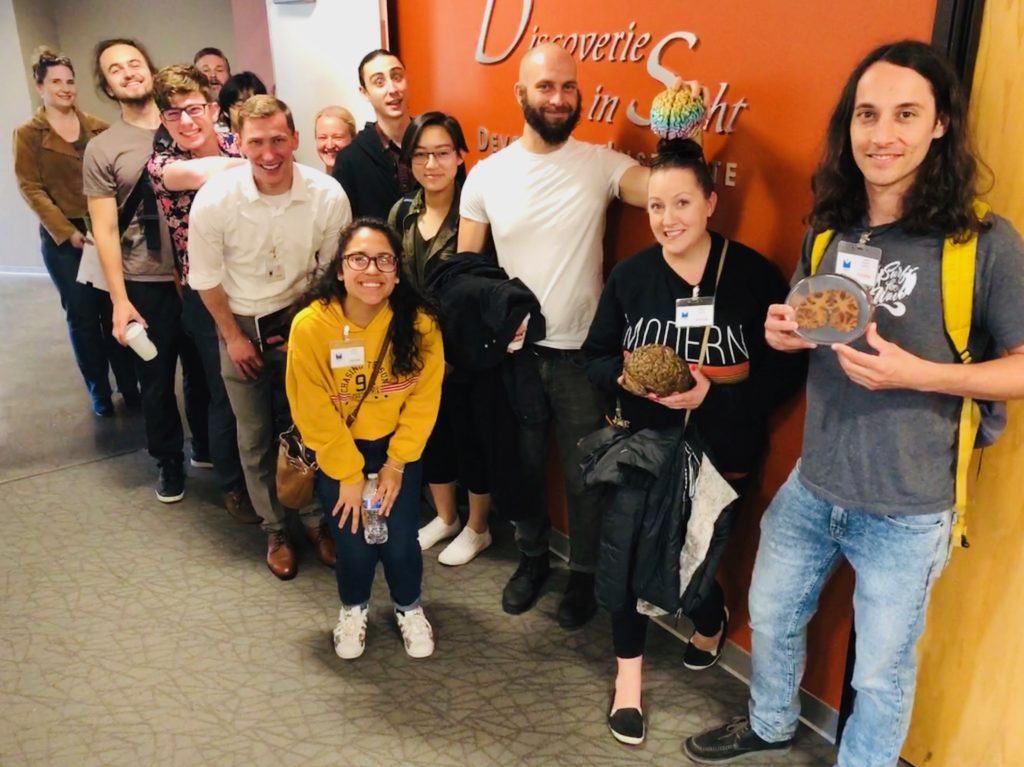
Our expert guide was Dr. Cheri Stowell, a celebrated glaucoma researcher and chemistry instructor at Portland Community College who works in the Discoveries in Sight department at LRI.
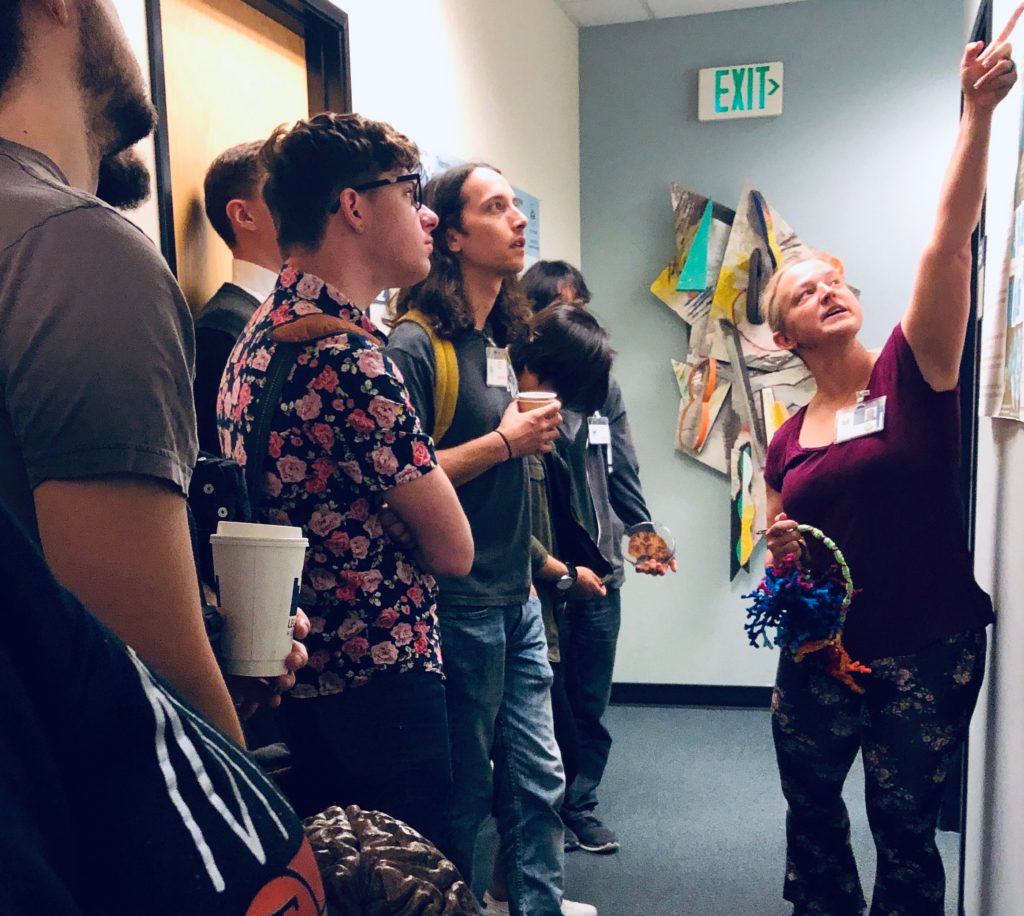
She clearly loves teaching!!
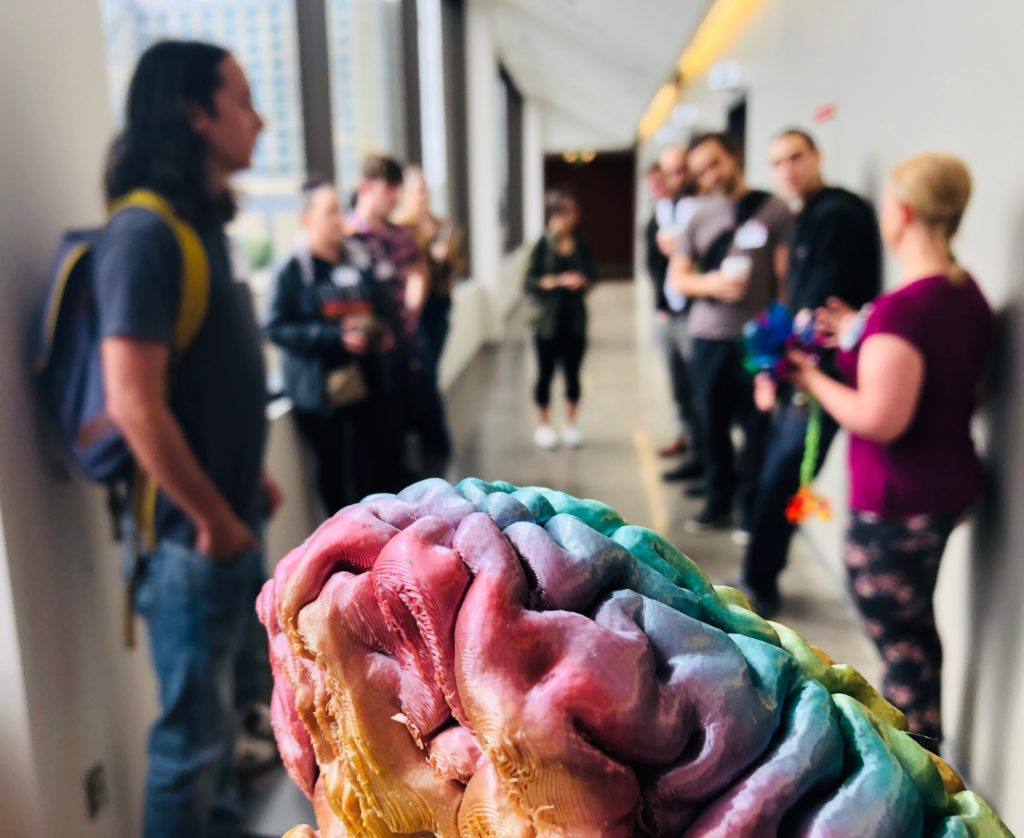
Dr. Stowell took us on a thorough, exuberant tour of research underway at Legacy. We saw the R. S. Dow Neurobiology Laboratories, where scientists study epilepsy, schizophrenia, gene therapies, and brain regeneration after TBI and stroke. They were busy remodeling space to welcome Dr. Adie Poe (from Habu Health), Dr. Barbara Sorg (formerly at WSU Vancouver), and current NW Noggin Brain Board member Dr. John Harkness (Rewire Neuroscience). This will further expand research at LRI, adding work on opioids, cannabinoids, cocaine, pain and addiction…
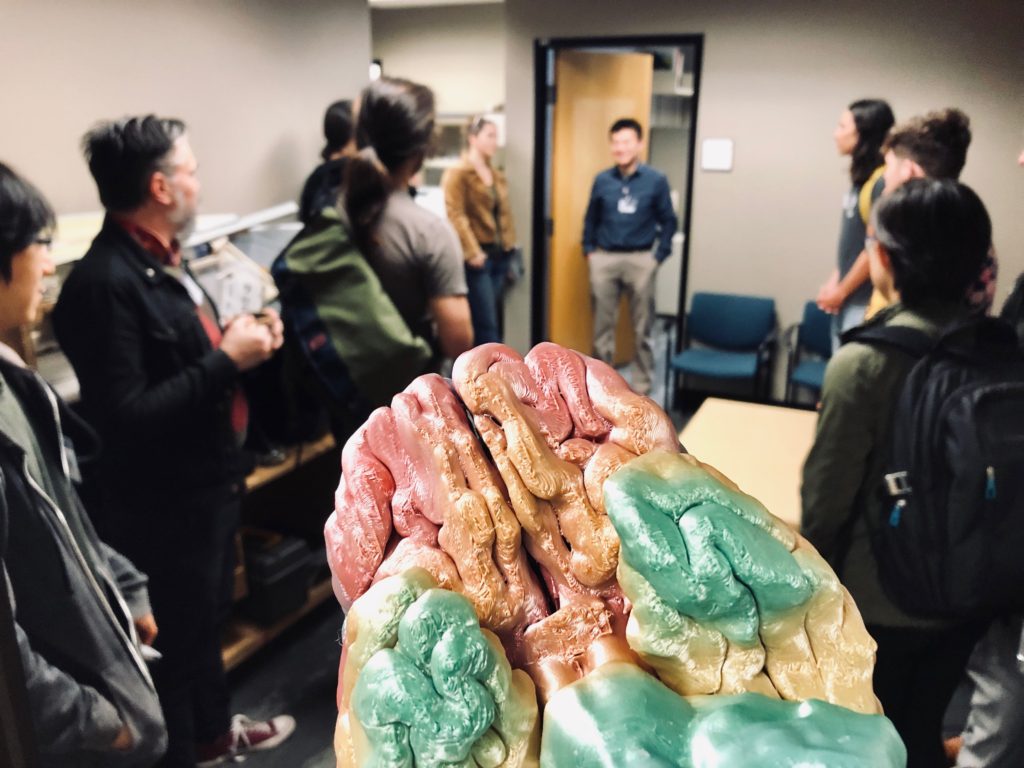
Eyeballs and caffeine
Legacy is home to the Devers Eye Institute, founded in 1959 following a donation by Portland coffee entrepreneur Arthur Devers. Devers suffered from retinitis pigmentosa, a genetic disorder that caused him to ultimately lose his photoreceptors, and his sight…
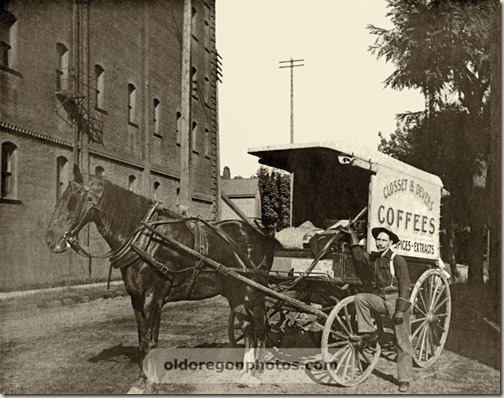
LEARN MORE: Caffeine and the eye

LEARN MORE ABOUT VISION: Hallucinations @ HeLa High
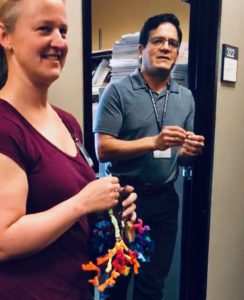
Dr. Stowell introduced us to some of the people who make the exciting Discoveries in Sight and other Legacy research departments run, including Juan Reynaud, the Manager for Information Technology. The level of retinal detail made visible by the use of modern imaging tech, including Spectral-Domain Optical Coherence Tomography (SDOCT) machines, is astonishing – and generates an incredible amount of data for storage and display!
LEARN MORE: Spectral-Domain Optical Coherence Tomography: A Comparison of Modern High-Resolution Retinal Imaging Systems
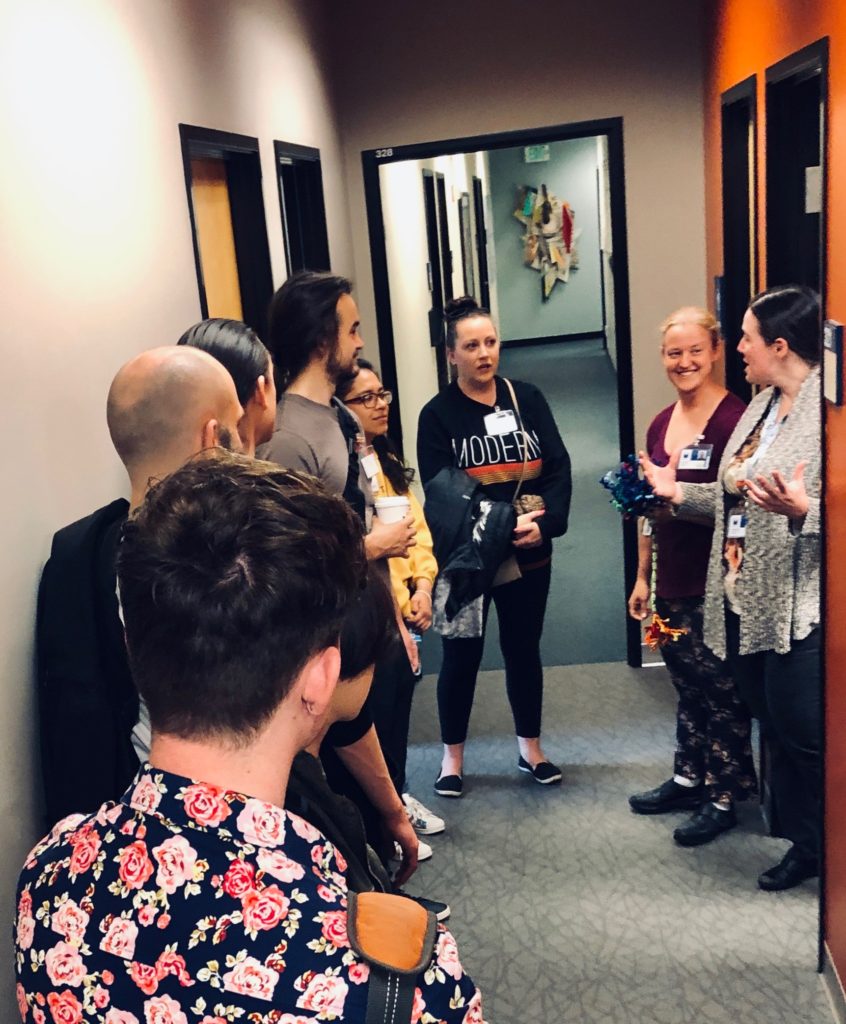
The eye is complex and fascinating, and Legacy scientists like Dr. Stowell and fellow Staff Scientist Dr. Laura Wilsey are particularly interested in the structural and functional changes associated with an eye disease known as glaucoma. Glaucoma affects about 2% of the population over 40 in the United States. Pressure changes in the eye can damage the optic nerves, the bundles of axonal wires carrying visual information out of our retinas.
LEARN MORE: What is Glaucoma?
LEARN MORE: Animal Models of Glaucoma
The Portland Progression Project (or P3 Project) aims “to identify which patients are at risk of rapid disease progression, so that they can be treated accordingly.” By collaborating on SDOCT research with OHSU and UC San Diego, scientists found evidence of damaged axons within the head of the optic nerve, where it leaves the eye, according to Dr. Wilsey.
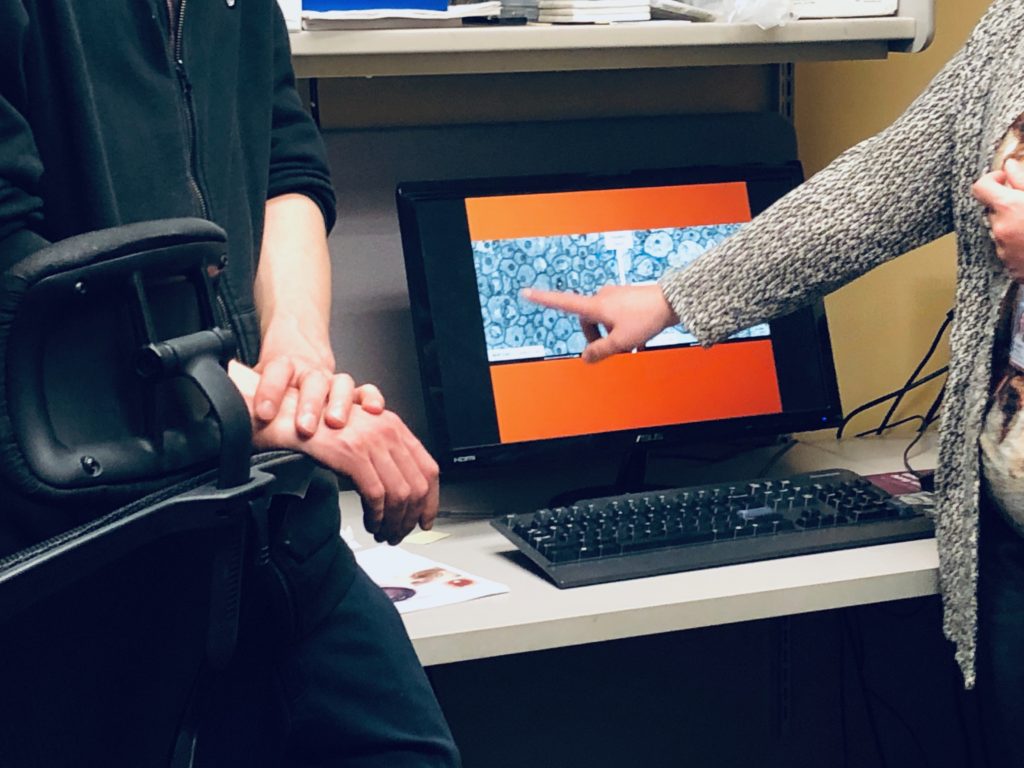
“We often look for changes in the diameter of the optic nerve to assess glaucoma,” she told us. “But maybe this isn’t the best measure. The thickness might not change but some axons may be blown out.”
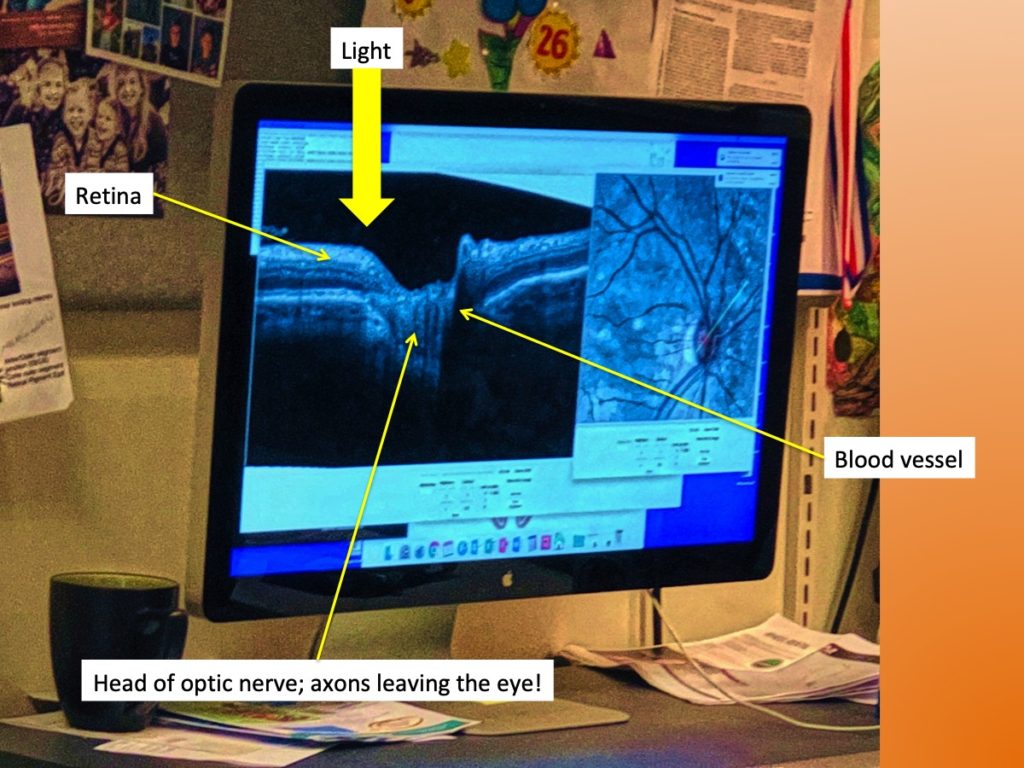
LEARN MORE: Macular Structure and Function in Nonhuman Primate Experimental Glaucoma
LEARN MORE: Optic Nerve Head Research Laboratory
LEARN MORE: The Connective Tissue Components of Optic Nerve Head Cupping in Monkey Experimental Glaucoma
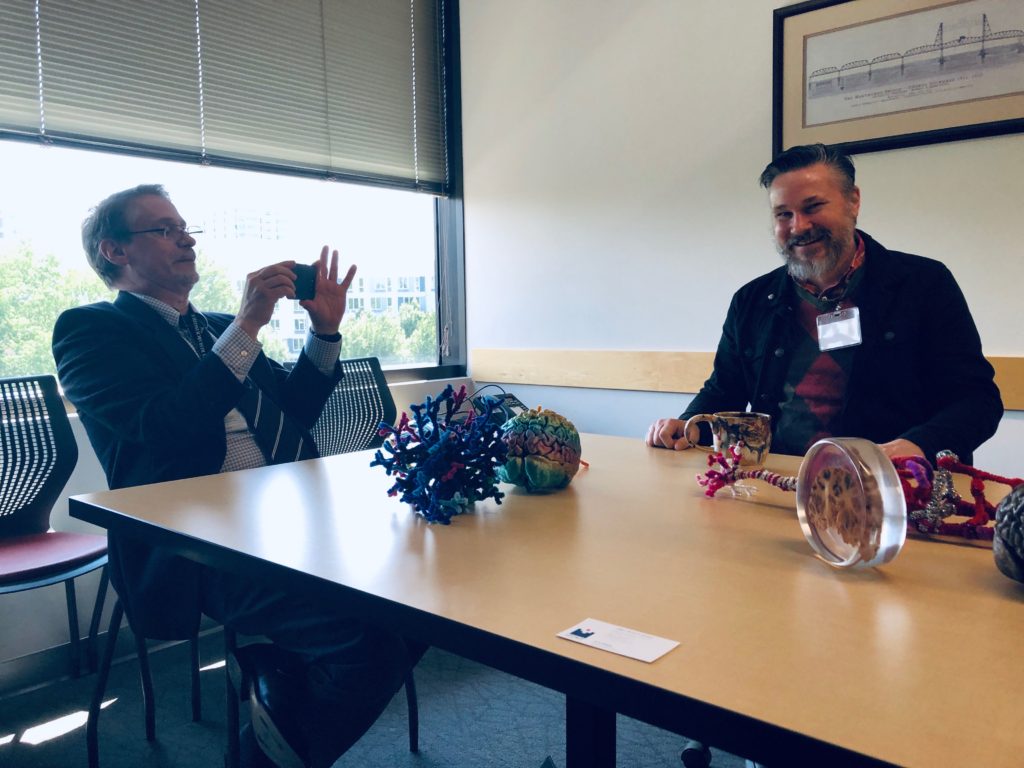
We were also greatly honored to meet Dr. Joseph Frascella, the Vice President for Research, and Erna Hibbetts, the Director of Research Operations at LRI. Dr. Frascella is the former Director of the Division of Clinical Neuroscience and Behavioral Research at the National Institute on Drug Abuse (NIDA), and served, before coming to Legacy, as the senior science advisor to NIDA Director Nora Volkow.
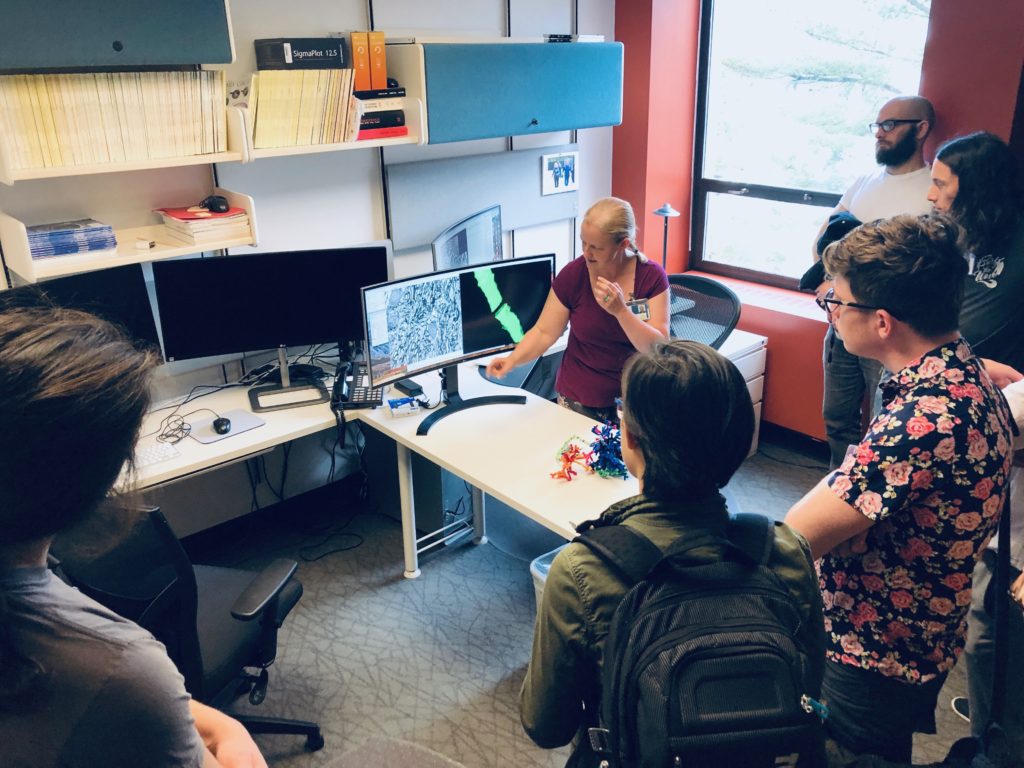
Our students were powerfully impacted by this experience…
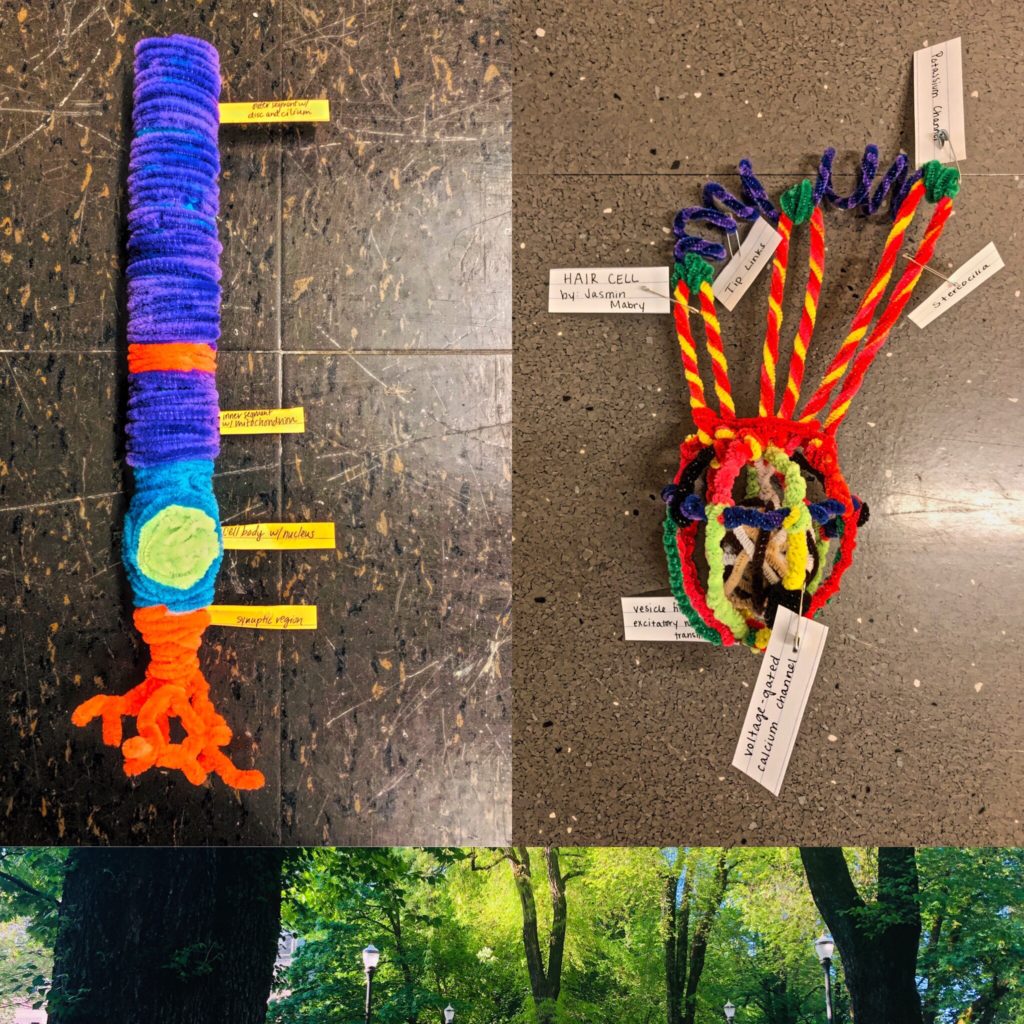
From Sai Kiersarsky at PSU: “Legacy Labs was gracious enough to spend some time giving several neuroscience students at Portland State University a tour of their research facility. This tour was detailed and informative, and was extremely useful for me as a student to see a research location and meet people who were conducting the research for topics I learn in classrooms. The first person perspective was also useful to imagine what it might be like to pursue a career in neuroscience. I’m sure undergrad students who decide to take up the opportunity for collaborating with the lab will find it to be hugely beneficial. That tour was definitely a highlight of this year!”
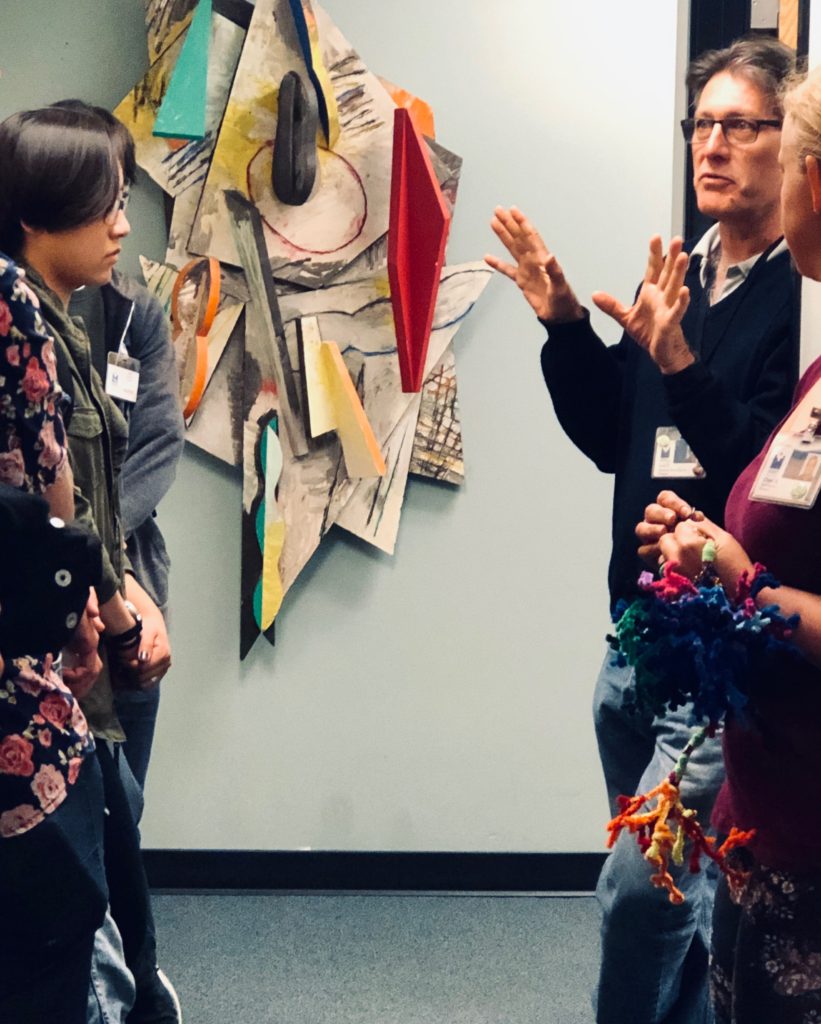
LEARN MORE: Scientists working at Legacy Research Institute
From Jesse Benefiel at PSU: “Touring Legacy’s Labs was an illuminating experience that, above all, demonstrated the interconnected nature of research. We were able to see the relevance of computer tech, ocular disorders, neuronal/synaptic imaging, and more within the span of little over an hour. I was further impressed at the enthusiasm of staff to take such excitement in presenting their duties, and such enthusiasm in providing opportunities to those interested in the field. The images were bright and beautiful, the researchers were knowledgable and informative, and the field was multidisciplinary.“
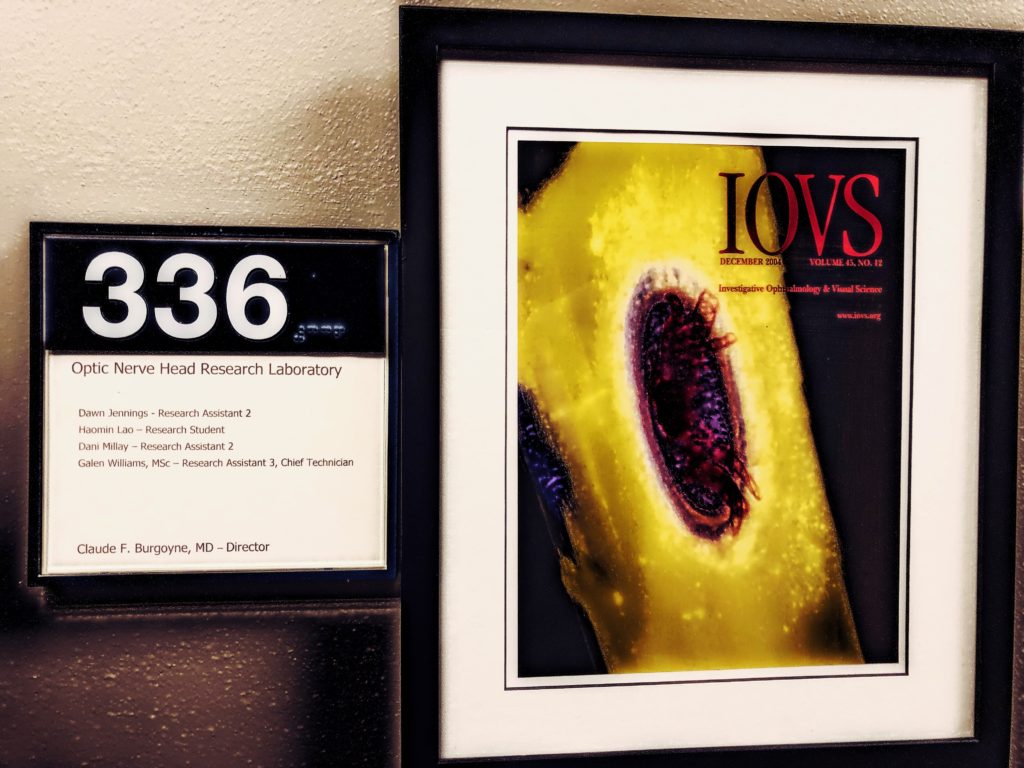
LEARN MORE: The optic nerve head in glaucoma
From Andrew Stanley at PSU: “Many undergraduates are eager to gain hands-on experience in their fields of study; however, for most of them—myself included—the path to becoming actively involved in research isn’t clearly defined. It can also be downright intimidating! Fortunately, Dr. Stowell was kind enough to show us around the Legacy Research Institute, and we met with scientists from a number of backgrounds that were tasked with a variety of projects and responsibilities. It was a captivating experience, as well as a vivid reminder that science is a collaborative activity! And I think that is something that those of us who are interested in research but unsure of our qualifications should keep in mind: everyone has a special skill or perspective to offer. And although it may seem daunting at first, there are dozens of research labs in Portland that would greatly welcome your enthusiasm and help. So reach out, and get involved!”

From Brockton Dowling: “Spending the morning at Legacy Research was a fascinating experience. Dr. Cheri Stowell was an awesome guide who introduced us to many researchers and staff. Most importantly, she made many dense topics understandable and interesting – all within just a couple of hours. I was particularly struck that the standard measure used to assess glaucoma was shown to be possibly quite inaccurate. Overall this tour was an awesome chance to observe the research process. I think many students are unsure if they are capable of assisting with these intensive projects, but Dr. Stowell certainly inspired confidence to pursue research and get involved! Thank you to Legacy Research and a special thanks to Dr. Stowell!”
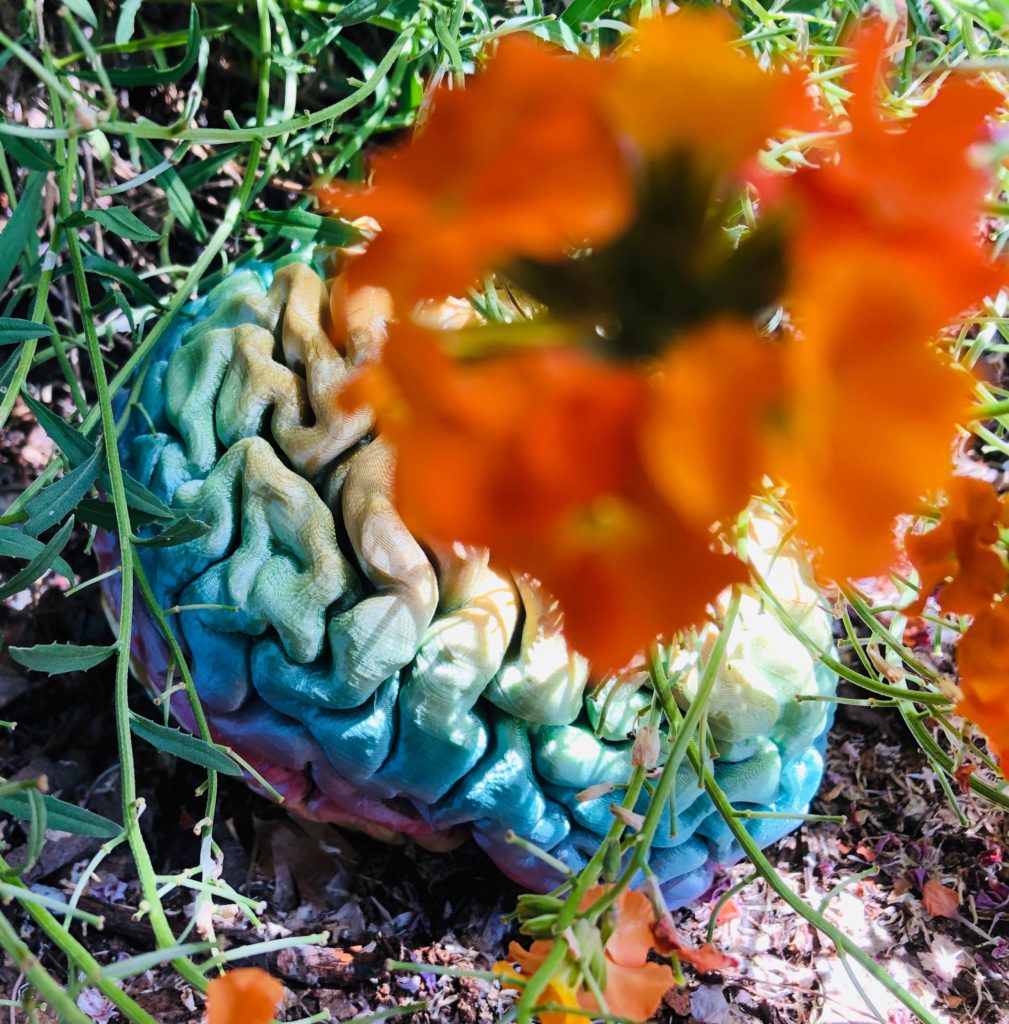
From Michael Deveney at PSU: “Over the past year I have been given so many phenomenal opportunities, and today’s experience didn’t disappoint. Thank you Legacy Research for inviting PSU undergraduates, such as myself, to tour your facility and ask questions. We had an amazing guide, Dr. Cheri Stowell, who is extremely knowledgeable about all the labs within Legacy. Squeezing into what seemed like a tiny elevator (I mean there were 12 of us!), we travelled to 3 different floors where we were introduced to lab technicians, PI’s, and Juan, the IT master! Epilepsy, glaucoma, macular degeneration, oh my! This was the crash course of all crash courses. The amount of enthusiasm and knowledge Dr. Stowell has for her field is invigorating and empowering. I was astounded by the acceptance of our whole group, and we all received warm invitations to work in these labs, even with the veterinary technician, as UNDERGRADUATES! All in all, I am still in shock, truly an experience of a lifetime. That being said, I’ll leave you with the burning dilemma of the day (that received answers of support for both sides): are the eyes a part of the brain, or is the brain a part of the eyes? Stay tuned…”
LEARN MORE: The retina as a window to the brain—from eye research to CNS disorders
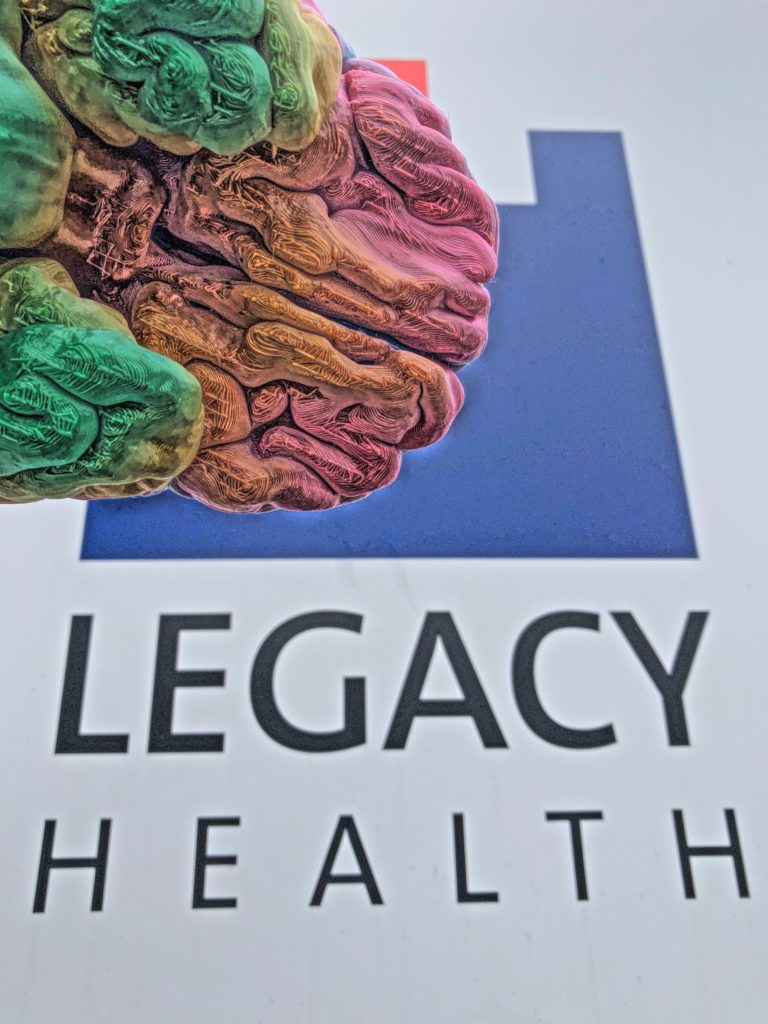
Many thanks to Danielle Osborne, Cheri Stowell, Juan Reynaud, Laura Wilsey, Steven Mansberger, Erna Hibbetts and Joseph Frascella for a warm and informative welcome to research – and research opportunities – at Legacy Health.


